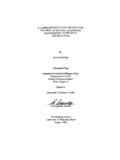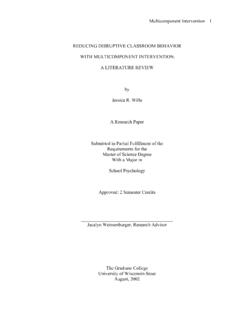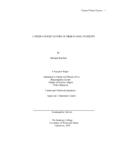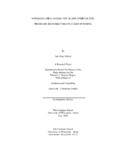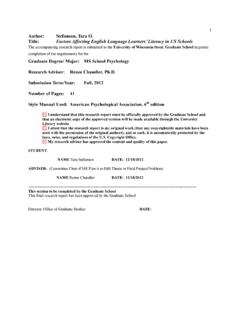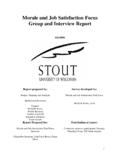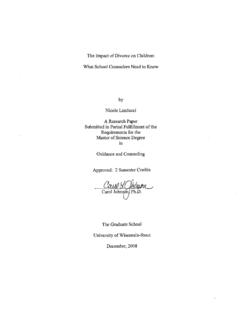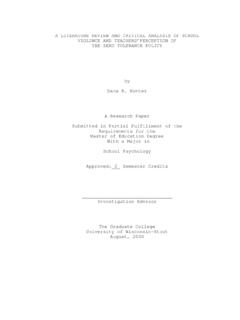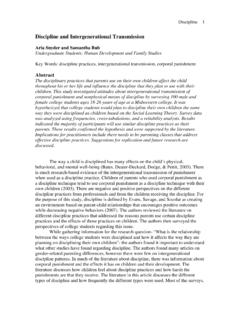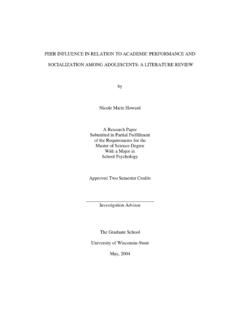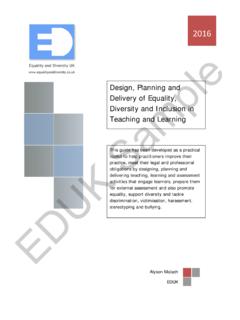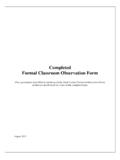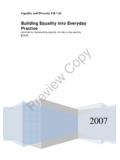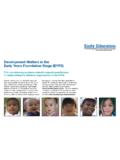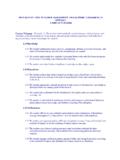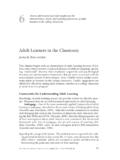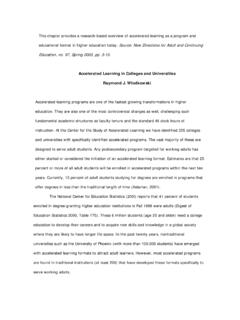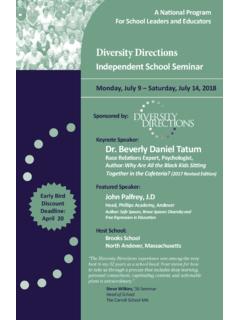Transcription of Differentiating Instruction using Multiple …
1 Differentiating Instruction using Multiple Intelligences in the Elementary School classroom : A Literature Review by Suzanna Gangi A Research Paper Submitted in Partial Fulfillment of the Requirements for the Master of Science Degree III Education The Graduate School University of Wisconsin-Stout May, 2011 Author: Title: The Graduate School University of Wisconsin-Stout Menomonie, WI Gangi, Suzanna Differentiating Instruction using Multiple Intelligences in the Elementary School classroom : A Literature Review Graduate Degree/ Major: MS Education Research Advisor: Carolyn Barnhart, EdD, CFCS MonthN ear: May 2011 Number of Pages: 60 Style Manual Used: American Psychological Association, 6th Edition.
2 Abstract This literature review will investigate the instructional strategy of differentiated Instruction and how Howard Gardner's theory of Multiple intelligences (MI) can be used as a method to differentiate Instruction . The MI theory explains how every person perceives the world through each of their intelligences. Specifically, this review will draw upon the research from 1983-2011 regarding using the MI theory as a way to 2 differentiate Instruction , resulting in greater student achievement in the elementary grades K-6. In the end, using Multiple intelligences to differentiate Instruction will assist teachers to accommodate the learning needs of all students.
3 3 Table of Contents .. Page Abstract .. 2 Chapter I: Introduction .. 6 Statement of the Problem .. 7 Purpose of the Study .. 8 Research Questions .. 8 Definitions ofTerrns .. 8 Assumptions and Limitations of the Study .. 9 Methodology .. 9 Chapter II: Literature Review .. l 0 Differentiated Instruction .. 10 Areas of Differentiated Instruction .. 11 Content .. 12 Process .. 13 Product .. 14 School Environment .. 14 Benefits of Differentiated Instruction .. 15 Success Stories .. 16 Drawbacks and Opposition to Differentiated Instruction .. 19 Methods for Differentiated Instruction .. 20 The Theory of Multiple Intelligences ..22 Gardner's Multiple Intelligences.
4 25 4 Linguistic intelligence ..25 Logical-Mathematical intelligence .. 25 Spatial intelligence .. 25 Bodily-Kinesthetic intelligence .. 25 Musical intelligence .. 26 Interpersonal intelligence .. 26 Intrapersonal intelligence .. 26 Naturalistic intelligence .. 26 Existential intelligence ..27 Identifying Student Strengths .. 27 Implementing the Theory of Multiple Intelligences .. 29 Benefits of using Multiple Intelligences .. 33 Success Stories .. 35 Views Regarding the Multiple Intelligences Theory .. 38 Gardner's Response to Criticism .. 3 9 Chapter III: Conclusion and Discussion .. , ..41 Summary of Literature .. , .. 41 Critical Analysis.
5 42 Research Question 1 .. 42 Research Question 2 .. 44 Research Question 3 .. 45 Limitations of the Study .. 46 Implications for Practice .. 46 5 Implications for Future Research ..49 References .. 52 Appendix: Checklist for intelligence Strengths .. 57 Chapter I: Introduction Teachers are faced with the challenge of teaching students with a wide range of abilities. VanSciver (2005) stated, "Teachers are now dealing with a level of academic diversity in their classrooms unheard of just a decade ago" (p. 534). In a single classroom , students' learning abilities may range from above grade level to below grade level. For example, in a second grade class made up of22 students, one will find that reading abilities vary in level.
6 One student may be reading at a kindergarten level, while another is reading beyond a fifth grade level. In this case, the teacher must find ways to adapt lesson plans to meet the learning abilities of both students, while also accommodating the needs of the other 20 students in the class. Therefore, teaching students with a wide range of abilities requires teachers to be innovative in how learning opportunities are offered. One solution to this challenge is to implement differentiated Instruction in the classroom . Differentiated Instruction accommodates the diverse learning needs of the students by varying the methods and materials used to teach each concept.
7 McBride (2004) stated that "Differentiated Instruction is vital to effecting positive change in student performance, because the one-strategy-fits-all approach doesn't work in a real classroom " (p. 39). As a way to differentiate Instruction , a teacher may implement the theory of Multiple intelligences (MI). The theory was developed by Howard Gardner in the early 1980s and states that each person has several distinct intelligences correlating with a specific part of the brain. Gardner (1983) originally identified seven categories of intelligences: linguistic, logical-mathematical, spatial, bodily-kinesthetic, musical, 6 7 intrapersonal, and interpersonal.
8 After continued research, Gardner added the naturalistic intelligence to his theory, and continues to research the existence of an existential intelligence (Gardner, 2009). Utilizing the MI theory, teachers can differentiate learning activities to accommodate each of the intelligences in the classroom . This means students will have targeted learning experiences, resulting in higher levels of achievement. Problem Statement In an ideal world, every student would learn the same content in exactly the same way. Teachers could teach a lesson once and all students would learn and understand the concept before moving on to the next topic of the day.
9 Unfortunately, students are not like this; rather, each student has their own preferred way of learning. Therefore, it is increasingly important for teachers, especially in the elementary grades, to differentiate their classroom Instruction using different methods and materials to teach each lesson. According to Tomlinson (2000), "Students in the elementary grades vary greatly, and if teachers want to maximize their students' individual potential, they will have to attend to the differences" (p. 3). If this is not done, students may become frustrated, confused, and unwilling to participate in the learning process. Thus, a select group of students may not be successful in school.
10 This literature review will define the teaching strategy of differentiated Instruction and the use of MI as a method to differentiate Instruction . MI research will be reviewed and analyzed to determine if it is an effective method to accomplish differentiated Instruction . Purpose of the Study This literature review aims to show the effects of using MI as a way to differentiate Instruction in the elementary classroom , determine if students are more engaged, and determine how students' academic achievement may be affected. Through a literature review and analysis, this review will attempt to illustrate that using MI is an effective way to differentiate learning opportunities in an elementary classroom , which may lead to greater success for most students regardless of their previous academic standing.
